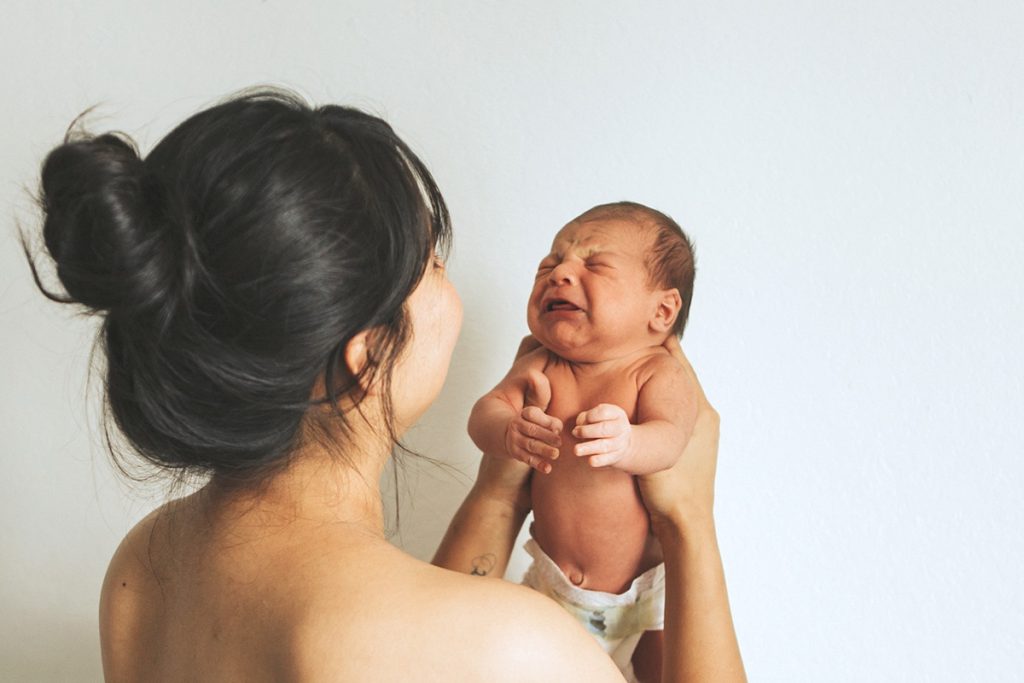
What is KISS Syndrome?
Kiss syndrome is a kinematic imbalance that occurs due to suboccipital strain. It is also known as KISS kinder or symmetry disorder.
It is the misalignment of the upper cervical spine causing permanent tensions in the body, and nervous and digestive problems.
This syndrome affects babies, including newborns, and makes them cry a lot while turning the head to one side or overstretched.
The term KiSS syndrome was coined in 1991 by Heiner Biedermann, a surgeon, and physician.
Signs and Symptoms of KISS Syndrome
The diagnosis of KISS syndrome is sometimes made by osteopaths or physiotherapists since it’s not recognized in conventional medicine.
One of the reasons is that the KISS syndrome cannot be demonstrated, however, the postural disorder is traced to the following recognized postural asymmetries if the conditions are severe.
Curved back
Torticollis
Skull Asymmetry
Hip maturation disorder
Crescent foot
The symptoms of the KiSS syndrome are very diverse, and it’s difficult to draw conclusions about the disorder, however, the following are the common KiSS symptoms in babies.
- Breastfeeding is only possible on one side
- Laterally flattened head
- Excessive drooling and difficulty swallowing
- Frequent crying, especially in the car seat or stroller
- Very restless sleep phases and one-sided sleeping position in a C-shape
- A preferred position, viewing, and movement direction
- Frequent hair pulling
Types of KiSS Syndrome
From the clinical observations of the KiSS syndrome, experts in the treatment of this disorder have classified it into 2 types.
While KiSS I describes a side tilt of the head and an asymmetrical body shape, with KiSS II, the head is always bent backward.
In both cases, the muscles that hold the head are not very well developed and this sometimes leads to painful movement restrictions.
Affected babies are not usually able to feed on moms’ both breasts. Sometimes, affected babies only turn to one side.
The two types of KiSS syndrome often appear together and can still occur in crawling babies.
KiSS Syndrome Diagnosis
If a baby is considered a crying baby, in addition to the diagnosis of three-month colic, there may also be a KiSS problem, the duration of which often can not be estimated.
Here, the crooked position of the head is attributed to the fact that towards the end of pregnancy the uterus becomes cramped and the infant therefore only holds the body and head in a certain position.
However, this does not lead to a displacement of the cervical vertebrae, as described in KISS syndrome, but to a kind of stiff neck with a laterally flattened head, which can persist for months after birth.
The symptoms are exacerbated by the reduced time that babies spend in the prone position these days (for fear of sudden infant death syndrome).
These symptoms can be partially resolved by placing the affected baby in the prone position more often.
Otherwise, the doctors advise patience, as there is often a spontaneous improvement after 3-4 months.
Physicians are also critical of the fact that an X-ray is often part of a KISS diagnosis and that the children are thus exposed to unnecessary radiation.
In addition, other serious illnesses may remain untreated, since various symptoms (headaches or developmental delays) are simply explained by KISS and further examinations are therefore omitted.
The diagnosis is usually made by a functional examination, in which an osteopath, pediatrician, or child physiotherapist scans the cervical spine and head joints and examines their mobility.
In rare cases, an X-ray examination is carried out to provide information about the position of the individual vertebrae.
The KiSS Therapy
According to Biedermann, KiSS syndrome develops unpredictably in the womb or during birth, and there are no preventive measures.
However, KISS syndrome is treatable if diagnosed and detected very quickly.
Osteopaths and children’s physiotherapists can improve the misalignment of the head joints with hand movements or even correct them in the first treatment.
Parents often succeed shortly after the treatment: the affected baby cries less.
Sleeping habits also change and often relax.
Treatment usually lasts about two to three weeks. Long-term treatment is only necessary in very rare cases.
Conclusion
The term KiSS syndrome (cervical joint-induced symmetry disorder or dysgeusia) describes the misalignment of the upper cervical vertebrae and its effects.
However, the occurrence of this disorder is doubted by the majority of conventional medicine practitioners and is therefore highly controversial.
However, KiSS syndrome is often diagnosed in babies and young children. The cause of the KiSS syndrome can allegedly be a permanent, restricted position in the womb or it can be caused by the use of aids during birth (forceps, suction cup).
The KiSS syndrome is usually treated with the help of osteopathic and/or physiotherapeutic measures.





